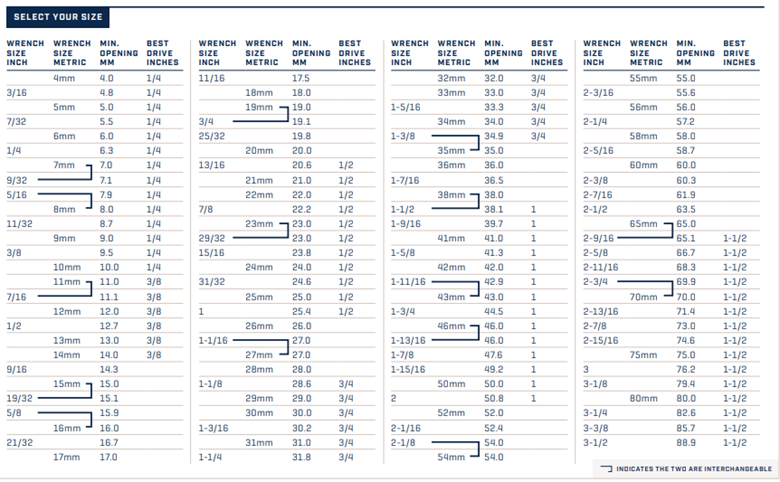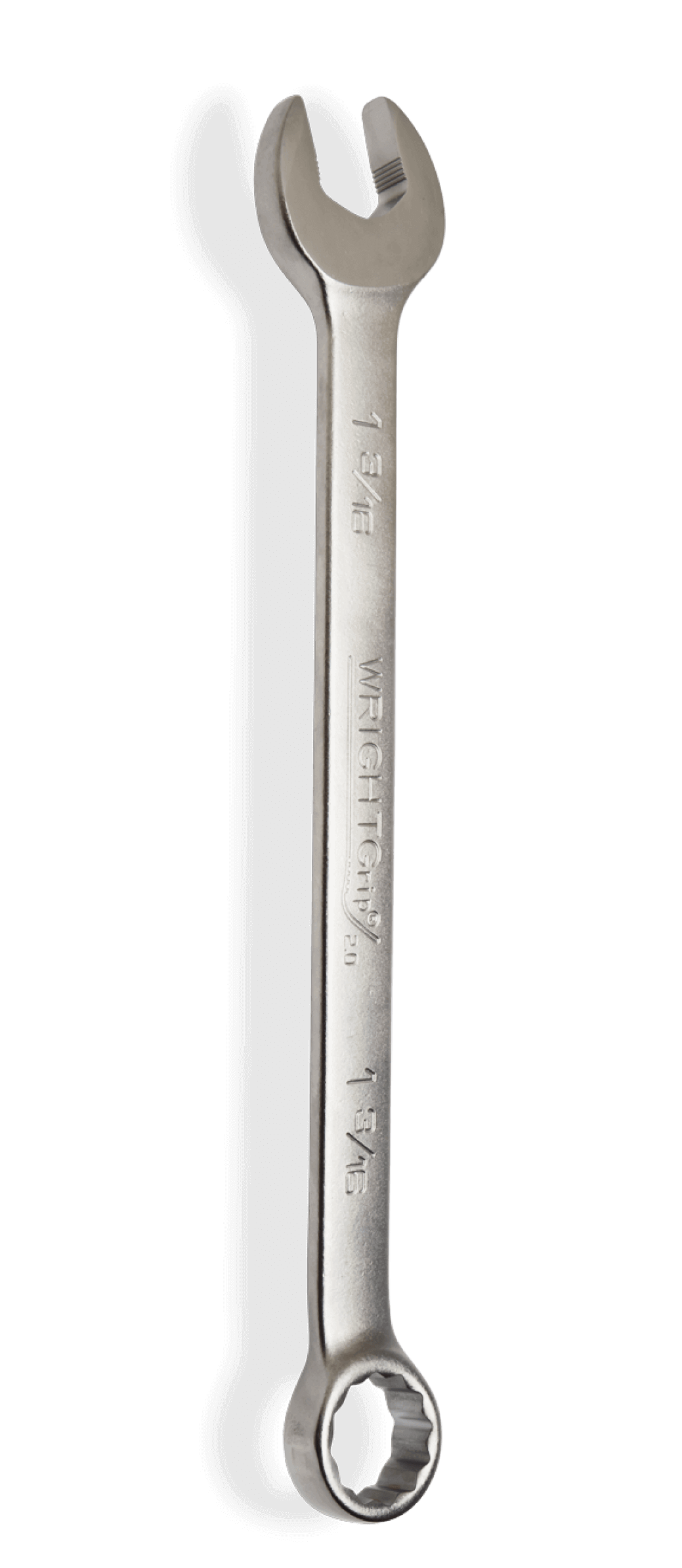September 27, 2023
Quick Way to Get the Correct Size Wrench
It’s common knowledge that if you try too small of a wrench on a fastener, it won’t fit, and you’ll lose time changing wrenches. Many people think the only danger in using a wrench that is slightly too large is rounding the corners of the fastener. But this may make it impossible to turn the fastener. When it doesn’t, even a slight amount of damage to the corners of the fastener makes it impossible to apply full torque.
Wright runs many tests on different designs of wrenches and fasteners. For these tests to be meaningful, everything was measured, and the wrenches were held to extra tight tolerances. Tests showed that even small changes in clearance made a surprisingly large difference in strength. Fasteners are typically made to the “Nominal” size and wrenches and sockets are made slightly larger to accommodate this. (I.E. a new one inch bolt or nut should measure exactly 1.000” or very close to it without going over, whereas a one inch socket or wrench with measure a minimum of 1.010”)
Wright has developed a system and a table to make finding the correct size wrench easier. It involves measuring across the flat dimension of the fastener with metric calipers and using the table that Wright has developed. Even if you do not know whether it is an inch or a metric fastener, the table shows the size of both inch and metric fasteners taking into account the wrench manufacturing tolerances. The trick is to use metric calipers so as not to have to bother with fractions.
The closer a wrench fits a fastener, the more torque can be transmitted without rounding the fastener corners or causing excessive wear to the wrench.
This table and instruction for its use are found on page 363 of the Wright Tool online catalog on our website [https://www.wrighttool.com/uploaded/faqs/pdf/WRIGHT_Cat_92_2020_LoRes.pdf]
- Measure the fastener head or nut with metric calipers.
- On the table, locate in the minimum opening column and the first number larger than you measured.
- Look to the left of that number to find the wrench size. (The bracket between two sizes indicates the two are interchangeable.)

For example, if you read 15.1, look down the table until you come to the value 15.9; then look across the table to 5/8". The bracket between two sizes indicates the two are interchangeable. However, the table can also be used to find the best possible fit. A 16mm wrench could be used, but 5/8" provides a better fit in this example. If you read 31.8, use the table or recognize that this is very close to, but slightly smaller than 32mm. Therefore, you can safely use a 32mm wrench without referring to the table.
Another way to use the table without measuring is to choose a wrench and try it. If the wrench is “sloppy loose,” choose a smaller wrench. Use the table to find the next size wrench, either inch or metric. If the wrench doesn’t fit, then you need to select a larger wrench. Again, use the table to see which is the next larger wrench in either the inch or metric size. If a fastener is damaged or worn, use a different size wrench. The table can always be used to get as close as possible to the best fit.
Always feel how much play there is to see that you have made the correct choice. If it doesn’t feel right, it isn’t right. Remember that all wrenches wear when they are used, even when they are used carefully. Once a wrench is worn, it should be discarded because its use would be the same as putting the wrong size wrench on a fastener.
For further information on safety or to sign up for our safety program, visit https://www.wrighttool.com/safety.





